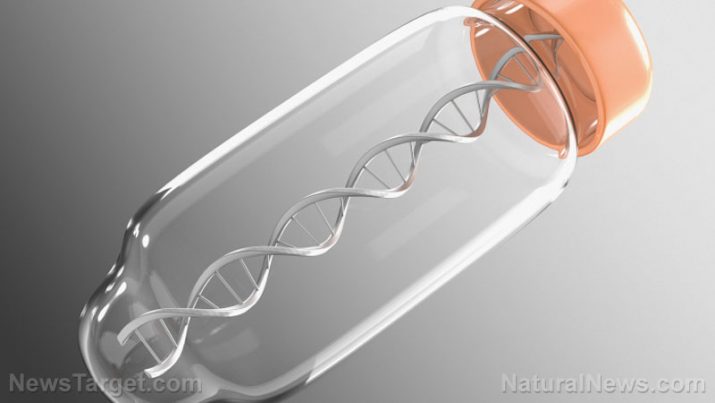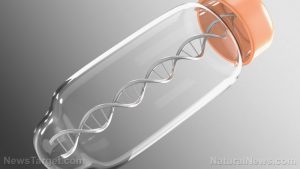
Trisomy – causes, side effects and treatments at NaturalPedia.com
Thursday, July 26, 2018 by Ralph Flores
http://www.naturalpedia.com/trisomy-causes-side-effects-and-treatments-at-naturalpedia-com.html

When a child is conceived, he inherits 23 chromosomes from each parent, for a total of 46 chromosomes. These are then paired and numbered according to size, with the last pair typically determining gender, leaving the baby with 23 pairs of chromosomes.
A trisomy occurs when an individual gets extra chromosome material on each of the chromosome pairs.
The most common trisomy conditions are:
- Trisomy 13. Also known as Patau’s syndrome, it results in severe physical abnormality and intellectual impairment. Those born with trisomy 13 are born with heart defects, brain and spinal cord abnormalities, poorly developed eyes, extra appendages, a cleft lip or a cleft palate, and weak muscle tone. Most infants with trisomy 13 usually die within days because of life-threatening medical conditions, and only five percent live past their first year.
- Trisomy 18. Infants with trisomy 18, also called Edwards syndrome, exhibit stunted growth even before birth (intrauterine growth retardation). If they are born – as some die even before birth – neonates will have multiple heart defects and organ abnormalities. Clinical features of trisomy 18 include a small, abnormally shaped head; a small jaw and mouth; and permanently clenched fists with overlapping fingers. The outlook is grim for infants with trisomy 18: Many die within their first month, and those that live past have severe mental impairments.
- Trisomy 21. The condition, commonly known as Down syndrome, is marked by a characteristic facial appearance. In addition, those with Down syndrome experience weak muscle tone in infancy and cognitive delays as he grows up. Most people with Down syndrome have a congenital heart defect, as well as digestive abnormalities. Over time, these individuals are also prone to develop severe medical conditions. This can include thyroid problems, hearing and vision impairment, and even cancer of blood-forming cells (leukemia).

Known risk factors and symptoms of trisomy
The etiology of trisomy conditions is unknown, but women who conceive later in life are more likely to have babies with trisomy.
In some cases, symptoms of trisomy disorders are seen during pregnancy, including:
- The presence of too much amniotic fluid (polyhydramnios)
- Having one umbilical cord artery
- Smaller-than-expected placenta
- A baby that is too small for its gestational date or less active than expected
Congenital defects may also be picked up during ultrasound scans.
Body systems affected by trisomy
Trisomy conditions affect the whole body. In particular, neonates with trisomy 13 and 18 have relatively low survival rates past their first month. Those with Down syndrome are at risk of developing autoimmune diseases, including diabetes, hyperthyroidism, and celiac disease. In addition, they are also more prone to orthopedic issues such as scoliosis, hip dislocations, and knee laxity.
Food items or nutrients that may prevent trisomy
Currently, no information exists on food items that treat trisomy conditions.
Treatments, management options for trisomy
For the most part, trisomy conditions can only be managed to improve a patient’s quality of life. In particular, Down syndrome, which has a longer life expectancy than others, can be managed using the following approaches.
- Physical therapy – This will address movement problems that are evident in children with Down syndrome. Exercises usually focus on improving muscle strength, balance, and posture. As he grows up, allow him to participate in yoga, dance, or music to help them control their movement.
- Speech therapy – Most children with the condition start speaking a little later than others. Speech therapy allows them to develop skills that are needed to communicate properly. This can also enable them to remember words and improve conversations.
- Occupational therapy – This enables children with Down syndrome to hone “self-care” skills to manage daily activities like getting dressed, eating, and using devices. As they grow older, this helps them better adapt to their environment.
- Behavioral and emotional therapy – People with Down syndrome often have trouble communicating. Therapy allows them to have better coping skills to deal with everyday emotions.
- Assistive devices – Caring for those with the condition is a long-term task; therefore, providing them with devices or wearables that allow them to do their tasks more easily can greatly improve their quality of life.
Where to learn more
- Compounds in green tea show promise in treating Down’s syndrome; may even help prevent facial features associated with the disorder
- Nutrients.news
- Herbs.news
- Medicine.news
- Health.news
Summary
A trisomy occurs when an individual gets extra chromosome material on each of the chromosome pairs.
The etiology of trisomy conditions is unknown.
Trisomy conditions affect the whole body.
Neonates with trisomy 13 and 18 have relatively low survival rates past their first month. Those with Down syndrome are at risk of developing autoimmune diseases and cancer.
For the most part, trisomy conditions can only be managed to improve a patient’s quality of life.
Sources include:
Tagged Under: Tags: trisomy





